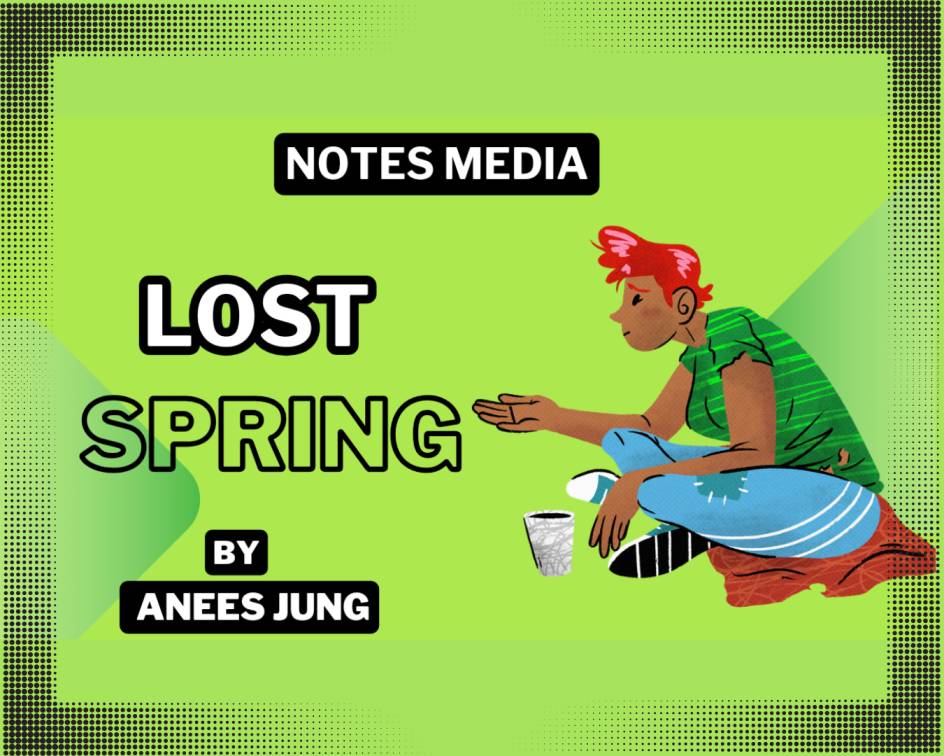Title of the Chapter “Lost Spring”
The title of the chapter Lost Spring itself defined the loss of childhood, innocence, joy, etc. As Spring basically denotes beauty, joy, and peace. So, here poet compares the spring to childhood which is the spring of every human’s life.
Theme of the Lost Spring
The Theme of the chapter mainly focuses on the exploitation faced by several children who suffer from poverty. Due to this they will not enjoy the essence of life and lose their innocence at a very early age. This Chapter is written by the famous Indian writer Anees Jung.
Introduction of the Lost Spring
The Chapter Lost Spring comprises mainly two stories.
- The first one is the Story of Saheb-E-Alam (Rag Picker).
- The second one is the Story of Mukesh (Bonded Labour).
Read More: A Thing of Beauty by John Keats Detailed Summary.
Character Sketch of the Lost Spring
- Saheb E Alam: Saheb is the young boy shown in the first part of the chapter. By profession, he is a rag picker in the street of Seemapuri District New Delhi. Here is the irony comes in the name of Saheb, as his name defines the meaning of “Lord of the Universe” but in reality he has a rag picker who scrounged (collected) the Garbage.
- Mukesh: Mukesh is the young boy shown in the second part of the chapter. Mukesh shows the quality of an Optimistic, Visionary, and Courageous because instead of no support he still wants to become a motor mechanic and break the chain of society. By seeing Mukesh their is hope comes into the mind of the author for the upliftment of the society.
Summary of the Lost Spring
First Part: The Story of Saheb E Alam a Rag Picker.
The first part of the chapter tells about the life faced by the rag pickers of Seemapuri who migrate from the field of Dakha, Bangladesh. As there is the destruction of fields and homes due to storms, so all the people have to migrate to big cities in the hope of employment and work opportunities.
So, Here is the story of Saheb who is the rag-picker in the district of Seemapuri, Delhi. Every Morning Author sees him scrounging garbage along with their gang. According to children, this garbage is gold for them because it is their only way of survival and sometimes they find coins and other fascinating things. But later Saheb started work in a tea stall that offered him 800 Rs per month and all-time meals. Now Saheb is not the master of their own he has lost his childhood and the innocence on their face.
Second Part: The Story of Mukesh a Bonded Labour.
The second part of the chapter tells us about the story of Mukesh who belongs to the family of Bangle Maker. Firozabad is the main hub for glass making and bangle industry. Almost around 20,000 children are involved in these businesses in spite of the child labour law passed by the government. There are horrible work conditions and environments in this industry. As children work in small, dark cells near the furnace with limited ventilation supply this leads to early blindness when they reach to their adulthood. There is no solution for these children to come out of these traps because of debt pressure.
Their condition is even going to worse under the presence of Middlemen, Police, Politician, etc. But the Mukesh are different from others. He has a dream of becoming a motor mechanic instead of a Bangle maker. He wants to break the family legacy of the Bangle Industry Labour and achieve their dreams and aspirations.
Read More: The Last Lesson by Alphonse Daudet Detailed Explanation.
Conclusion of the Lost Spring
So we have seen the two different stories of Saheb and Mukesh which show that exploitation and poverty are the burden for the children which disappears the innocence and joy in their childhood.
Social Link of Our Page
- Instagram: Click Here
- Whatsapp Community: Click Here
- YouTube: Click Here
Important Question of the Lost Spring
What Do you Think Saheb is happy working at the tea stall? Explain?
Now, Saheb is not happy with the work in the Tea Stall instead of getting Rs. 800 per month and all-time meals because he is not the master of his own. The Steel canister is a burden in comparison to the bag.
Describe any two problems faced by the bangle maker of Firozabad?
The major two problems faced by the workers in Firozabad are that first one is poor work conditions for example dingy cells, furnaces with high temperatures, and poor ventilation which lead to various health issues like eyesight problems, and second one is problems created by the middlemen, politicians and police because of the financial issues and poverty.
How is Mukesh different from other bangle maker?
Mukesh is an ambitious person as he has the dream of becoming a motor mechanic which is a different path in comparison to their ancestor’s work. He has the vision of choosing a different career which makes him different from others.
Rag picking is the means of survival in seemapuri? Explain?
For several years Rag Picking has become the proportion of art. As it becomes their daily bread and support of livelihood for their survival.
Explain the attitude of ragpickers toward the shoes in seemapuri?
In seemapuri every boy has a different attitude toward the shoes. For example, one boy does not like wearing shoes, and another boy does not wear shoes in his entire life and wants to get one of them but according to the author, it’s not about the money but the traditional way of roaming barefoot.
Read More: Deep Water by William Douglas Detailed Explanation.







1 thought on “Lost Spring by Anees Jung, CBSE Class 12 English Summary”